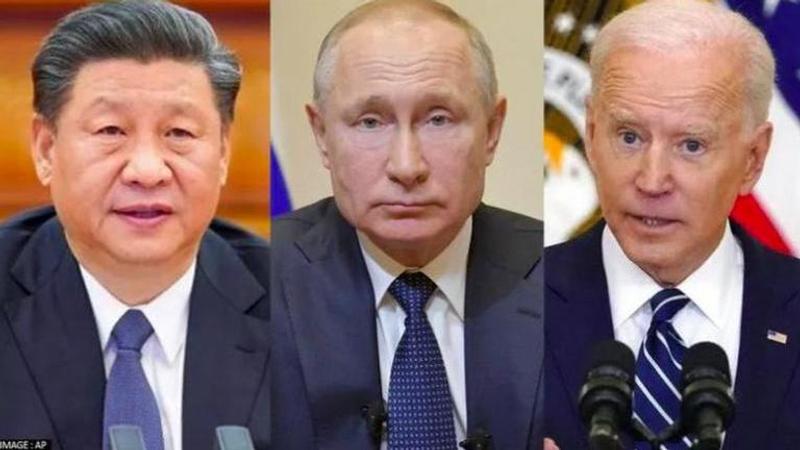Published 20:11 IST, April 23rd 2022
China, Russia conducted missile tests in concealed warning against US' hegemony
PRC flaunted its China’s anti-access/area-denial capabilities that could counter adversary’s naval fleet in the Indo Pacific while Moscow launched Sarmat-2.

China and Russia have been conducting separate missile tests this week in a show of defiance to the United States’ global hegemony, and what could be deciphered as a concealed warning to the West about the new global order. As Russia launched its Sarmat-2 intercontinental ballistic missile (ICBM) nicknamed the "Satan II” from a silo launcher at the Plesetsk State Test Cosmodrome in the Arkhangelsk region ahead of the second phase of the military offensive in Ukraine, Russia’s President Vladimir Putin warned that it should convey a thought to “those who are trying to threaten Russia.”
The ballistic missile was first tested in December 2017 and separately in 2018, Putin had threatened that the new weapon would render NATO defenses “futile.”
In this handout photo released by Roscosmos Space Agency Press Service the Sarmat intercontinental ballistic missile is launched from Plesetsk in Russia's northwest. Credit: Associated Press
Credit: Associated Press
Beijing meanwhile, which has deterred from condemning Moscow’s brutal invasion of Ukraine also tested its YJ-21 hypersonic missile from a Type 055 Renhai cruiser. PRC flaunted China’s anti-access/area-denial (A2/AD) capabilities that could counter the adversary’s naval fleet in the Indo Pacific. People’s Liberation Army Navy (PLAN) also published the footage of the launch of its hypersonic anti-war vessel ballistic missile that could travel to a range of 180 miles in the seas. Moscow’s intercontinental ballistic missile capable of carrying tons of nuclear payload is one of the most powerful ICBM in its arsenal.
Putin asserts Russia’s security aspect vital 'in the face of external threats'
Putin, in a state speech after the successful launch, asserted that it is “a truly unique weapon that will strengthen the combat potential of our armed forces, reliably ensure Russia’s security in the face of external threats,” hinting at the West, but stopping short of mentioning the United States. The “next-generation” RS-28 Sarmat will “provide food for thought to those who in the heat of frenzied aggressive rhetoric try to threaten our country,” Putin warned.
Taking note of the geopolitical dynamics, Pentagon spokesman John Kirby downplayed the threat, saying that Russia’s threats do not bother the United States despite the 200 metric ton Sarmat that replaced 1962 designed Soviet-designed Voevoda could carry a nuclear payload and could strike anywhere in the world to the north and South pole.
“Sarmat is the most powerful missile with the longest range of destruction of targets in the world, which will significantly increase the combat power of our country’s strategic nuclear forces,” the Russian defense ministry announced in a statement after the launch, categorically stressing that it is“domestically manufactured.”
Dmitry Rogozin, head of the Roscosmos space agency declared that the target of the Sarmat intercontinental ballistic missile would be an ambitious one. Chian and Russia’s ballistic missile launch comes after a senior US diplomat warned Beijing of coordinated sanctions if it provided military support to ally Russia during its Ukraine invasion. U.S. Deputy Secretary of State Wendy Sherman said at an event in Brussels that Washington aims to end India’s reliance on Russian weapons while teaching Beijing “the right lessons.”
“They have seen what we have done in terms of sanctions, export controls, designations, vis-a-vis Russia, so it should give them some idea of the menu from which we could choose if indeed China were to provide material support,” Sherman told the conference.
Updated 20:11 IST, April 23rd 2022






